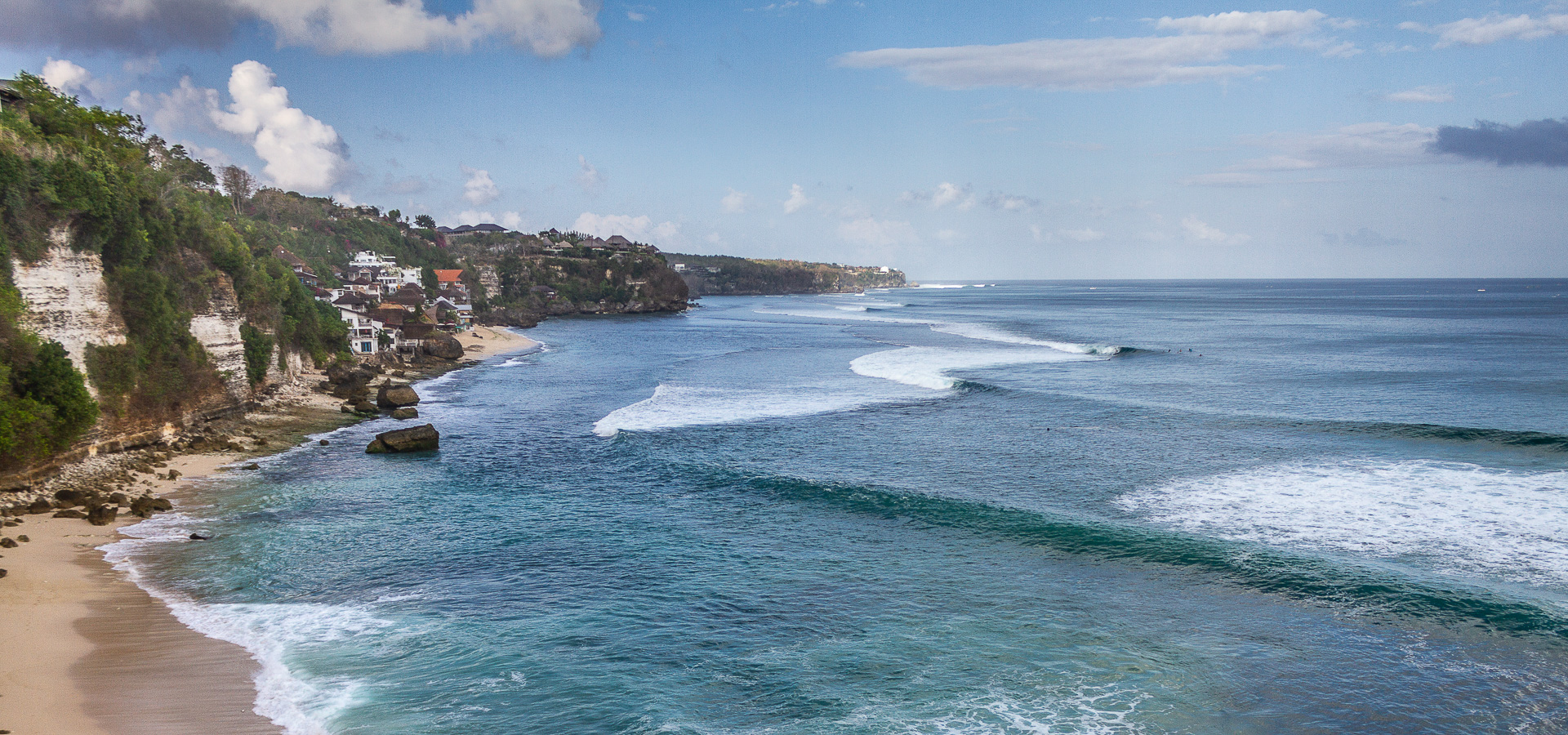
The Ultimate Guide to Surfing Bingin
Introduction
Are you looking for the world’s easiest barrel?
Look no further than Bingin where we run special coaching sessions on barrel riding.
Bingin is the perfect wave machine and is located less than 1km from our Uluwatu surf camp.
Bingin has earned its place as one of the most fun waves in the world and offers the easiest barrel. If you can’t get barrelled at Bingin, you can’t get barrelled anywhere.
This surf spot is lesser known than Padang Padang Left but Bingin is just as perfect, and is more consistent than Padang Padang.
Bingin is an advanced-level surf spot but is suitable for intermediates on small swells at mid-high tide. There is also a section of the wave that is suitable for beginners at high tide.
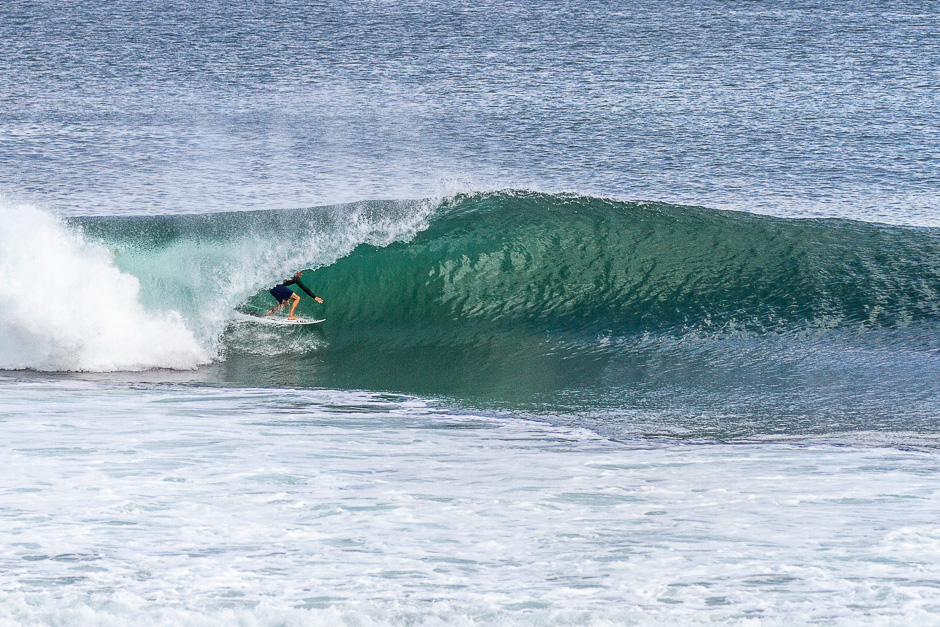
In this blog post, we dive into the world of Bingin and guide you with invaluable insights and tips to navigate the world’s easiest barrel.
If you’re ready to learn everything you ever wanted to know about Bingin, then read on.
Useful surfing information
Bingin picks up less swell than Uluwatu and Balangan. Uluwatu needs to be at least head and a half high, for Bingin to be worth considering.
Bingin is a machine-type wave that throws barrels and never closes out. It attracts top local surfers and surfers from all over the world who are looking for their first barrel or their 10,000th barrel.
- The take-off is all about being in the right position and the wave is a bit shifty. Too far on the shoulder and you will miss it, too deep and you will not make the first section. The wave does not usually barrel on take-off.
- If you take off deep, then you run the risk of hitting the reef, not making the first section, and/or getting dropped in on.
- After the first section, there is usually a barrel section or a lip to whack, so your take-off is about setting up for the barrel or hitting the lip hard.
- The wave is usually a barrel and top turn, or two top turns (three if you are quick enough). It is a short intense wave, but there is sometimes a second barrel section, and can be a long ride if you get past the greedies section. Normally only local surfers pick these waves and can get past greedies.
The set waves come in very fast out of deep water and can move directly towards the shore or shift to the left. The wave is very steep if you take off deep, and also shallow and scary. 2 meters to the shoulder and the take off is much easier and not so dangerous.
Bingin is always smaller than Uluwatu because it’s less exposed to the swell, which is always from the SSW or SWS. On a SSW swell Bingin is 2 foot smaller than Uluwatu but on a SWS swell only 1 foot smaller. Uluwatu needs to be double overhead for Bingin to be the perfect size which is head high to head and a half high. Any bigger than that then the wave gets fat, doesn’t barrel, and the current is very strong.
When Bingin is too big the options are Impossibles or Padang lefts which will be bigger than Bingin, but hold a big swell better. You need a big board and even bigger balls to venture out at Uluwatu when Bingin is too big.
On tiny days you will still always find someone out at Bingin, partly because so many people have accommodation nearby and hang out on the beach. There is always a rideable wave at Bingin but on small days the wait between sets is tediously long and you would be better off motoring up to Uluwatu for more size, power, and consistency.
Bingin breaks at all tides. Low tide the wave comes in very fast out of deep water, feels the reef, the bottom of the wave slows down while the lip throws a barrel. Not many people surf it at low tide as it is dangerously shallow and the ride is short. Take off, barrel, kick out if skillful and luck is with you, or take off, hit the reef and go to the medical center for reef cuts or worse.
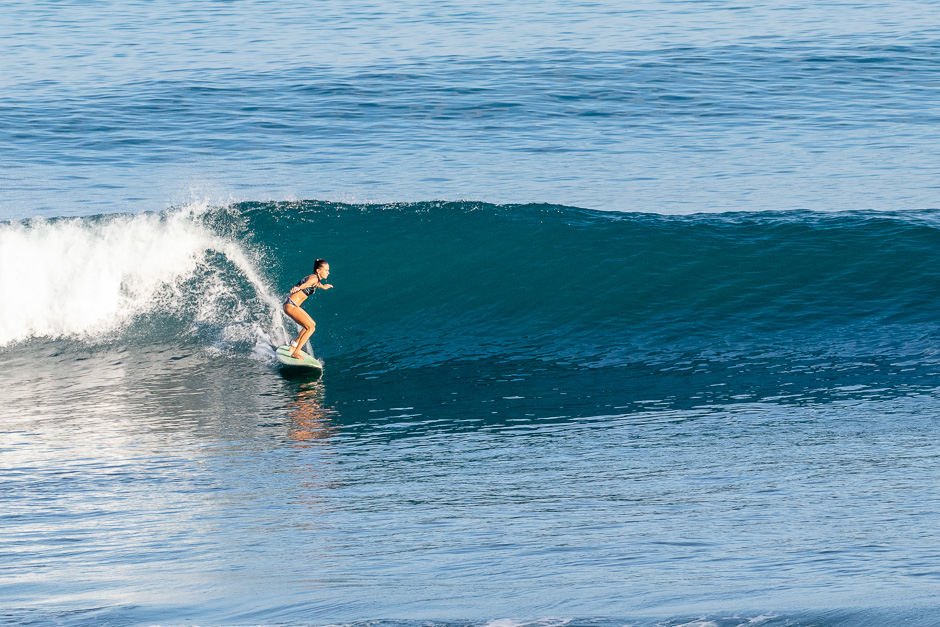
Bingin is best at mid tide but this is also the most popular time to surf it. As the tide fills in, the ride becomes longer and there is less chance of compound fractures, but still a good opportunity of scoring great barrels.
At high tide the wave is still excellent, if the swell is big enough to break in deeper water, but the current gets progressively stronger the higher the tide. The ride is longer on a high tide as you can take off deeper but there is a lot of water running down from impossibles that will tire you out, and the wave is harder to catch.
When is the best time to surf Bingin?
You will never surf Bingin alone, unless the conditions are truly awful. Even paddling out in the dark will not get you an empty line up.
- First light does not usually offer the best conditions as Bingin needs an offshore wind to break best.
- Early morning usually has some morning sickness with a current running down from Impossibles affecting the wave quality.
- Mid-morning can be a good time when the early crew comes in for their breakfast. You will often find a 30-60 minute breakfast window when it gets quiet.
- Afternoons are popular with the local surfers. They dominate the line-up as they read the wave so well and maneuver into the perfect spot.
If you want a top-quality set wave then you will need to be patient, and be seen to be patient.
Bingin is the type of wave where everyone knows everyone and there is an established pecking order.
Local surfers are usually very choosy and happy to let the second quality waves go. Second quality waves are still great and can barrel.
Third and fourth quality waves are still great. In fact, any wave at Bingin is a blast, as it breaks with so much power.
You can avoid the local surfers by surfing at low tide but beware of the risks involved.
If Bingin is too small then Uluwatu or Balangan are good options. You can walk from Bingin to Balangan at low tide. Check out our guide to surfing Uluwatu here.
If Bingin is too big to barrel then that is the perfect size swell for Padang Padang.
Bingin is such a perfect wave that it is still good on a medium-strength onshore wind. It holds the afternoon trade winds better than any other spot in Bali due to the high cliffs and the proximity of the break to the shoreline. Some local surfers’ favorite wind is easterly (cross offshore) as it blows directly into the barrel and holds it up.
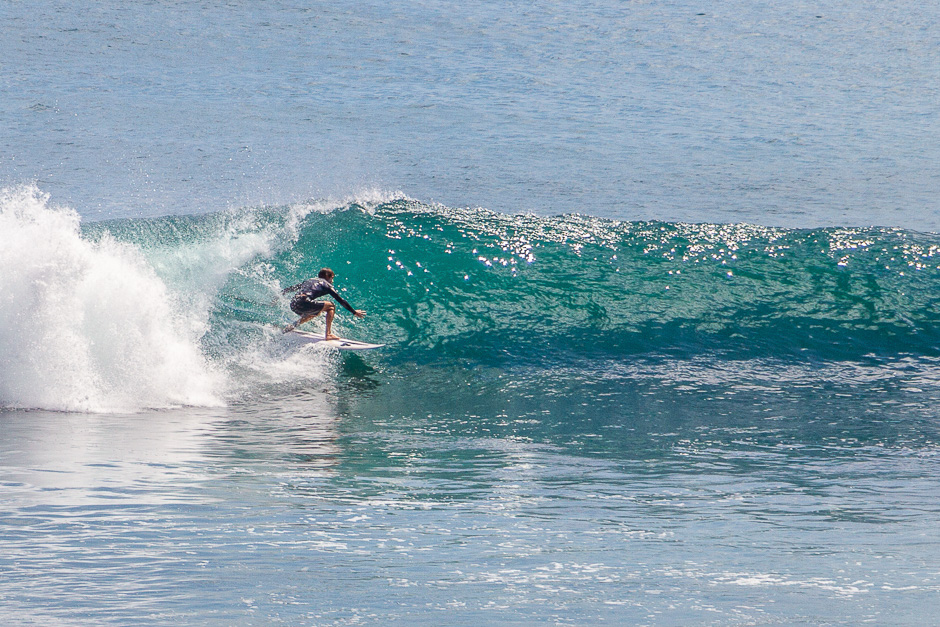
Dangers of surfing Bingin
Getting to the line up is dangerous, particularly on bigger days with a strong current. The quickest way to the line up is to the south of the break. The waves dump hard onto the reef here so you need good timing not to get injured before even reaching the break. On bigger days the current will sweep you into the take off zone, so best start your paddle out very far to the south. You can enter the break from the Dreamland side, but you will be paddling against the current.
Take off deep and the wave breaks hard in 2 knee high water. If you are going straight on the take off and don’t make it, you are going straight into the reef, which is needless to say sharp and hard.
Ride the wave too far and you will end up in greedies, which is named after greedy surfers who don’t kick out when they should. It may look tempting to do a floater but we have never seen anyone make a floater as it breaks hard on dry rock. If you do find yourself in the greedies section and want to exit, do not try to ride or jump over the wave. It will pull you back in and you will hit the reef hard. Best to stay low and try to push through the bottom of the wave. For goofy footers it is a little bit easier to bend low and push from the board.
Getting out of the water can also be difficult if exiting at the end of a ride and there is a set behind you. The current is taking you to greedies, and the risk is that the following waves will slam dunk you onto dry reef.
There you have the 4 main dangers, entering the water, taking off too deep, riding the wave too far, and exiting the water. The fifth danger is low tide. This can be avoided by timing your surf session when there is a safe amount of water on the reef.
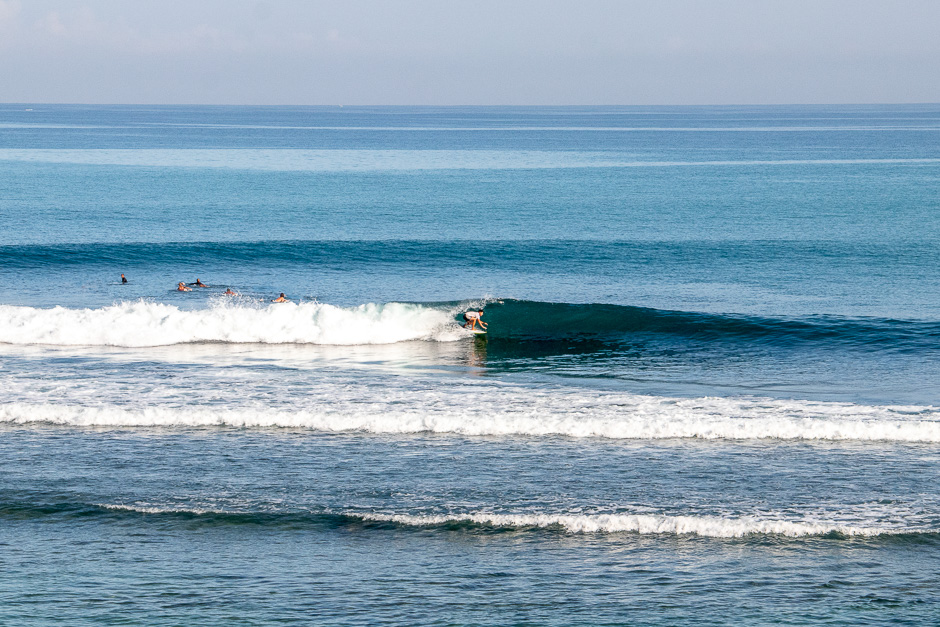
Can beginners and intermediates surf Bingin?
At high tide there is a soft right hander breaking from Bingin peak. It is suitable for intermediates as it breaks gently into deep water, but it is a short ride and not a quality wave.
Inside from this right hander the water rolls gently when the tide is high enough and the swell is small. It is surfable by beginners but due to the reef and current, there is some risk of injury on the reef of being swept into Bingin lefts. It is necessary for beginners to have a qualified local surf instructor to determine when the conditions are suitable and provide safety in the water.
On conditions where the right is surfable i.e. high tide on a 2 foot swell, Bingin peak can be surfed by intermediates. Entering and exiting the water is relatively easy and the wave breaks deep enough that there is little risk of grazing the reef. Again it is recommended to have an expert local surf instructor to determine when conditions are suitable and to help with positioning in the line up and wave selection.
Any other surf sections at Bingin?
Yes. There is a section called mini-pipeline, which is the next section after greedies. At high tide on a bigger swell this section is popular with groms. It barrels on take off and is a fast short intense ride. If Bingin is too big, or too crowded, mini-pipeline could be worth a go, as this section is always smaller and less crowded than the main break.
Any quality right hand waves?
Yes. In between Bingin and Dreamland there is a surf break called Bingin rights that is perfect for intermediates as it breaks in a defined spot quite softly at a measured speed. It is a low tide break, and a good option for novice surfers when Bingin and Drealand are too big.